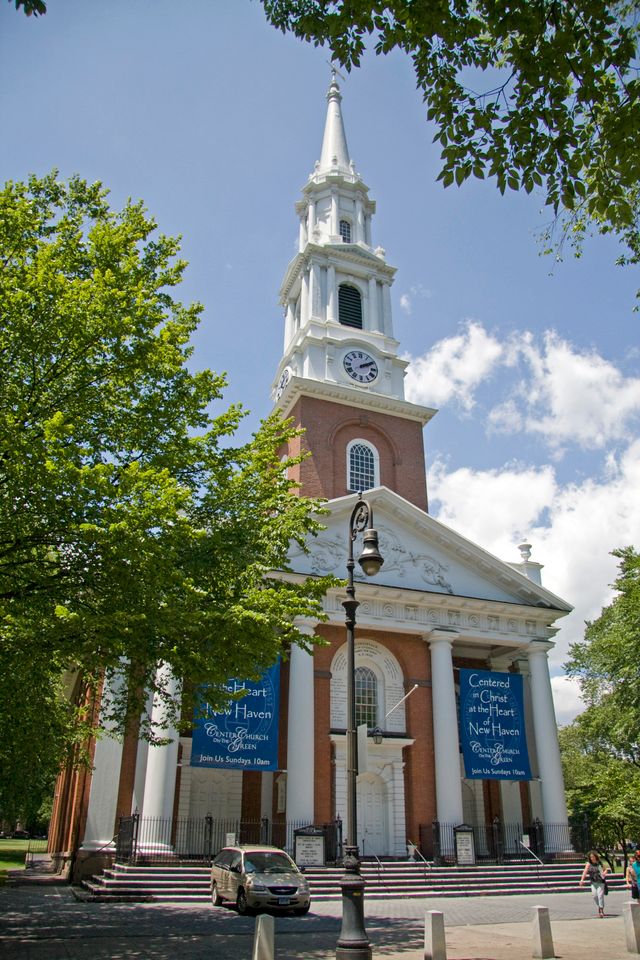Center Church on the Green

Open to the public
Center Church on the Green in New Haven holds a deep historical significance, tracing its roots to its establishment on August 23, 1639, by the Puritans who founded the New Haven Colony with a vision of creating a theocratic “New Jerusalem.” The current Meeting House, completed between 1812 and 1814, stands as the congregation’s fourth meeting house. Notably, it was constructed atop the ancient burial grounds of the colony on the Green, leading to the basement being called the Crypt due to its many burial stones.
Designed by the renowned New Haven architect Ithiel Town, Center Church’s fourth meeting house reflects the Post-Georgian or Federal style, drawing inspiration from St. Martin’s in the Fields on Trafalgar Square in London. Throughout the nineteenth century, Center Church was home to distinguished ministers, among them Leonard Bacon, whose leadership spanned over half a century from 1825 to 1881, and who also served as a Professor of Religion at Yale from 1866 to 1881.
An important aspect of Center Church’s historical involvement is its connection to the Amistad ship and the abolitionist movement it symbolized. The founding of the Amistad Committee in 1988 by pastors from New Haven’s Congregational churches, including Center Church on the Green, played a pivotal role in raising awareness about the Amistad and its historical significance, carrying forward the church’s longstanding commitment to advocating for freedom and justice, which began in 1839.
